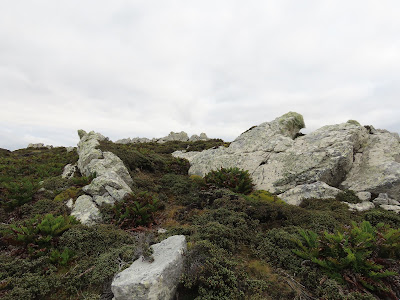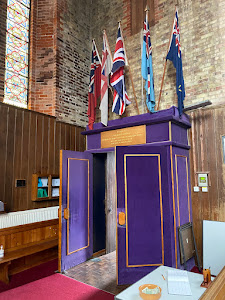Antarctica 2023
FALKLAND ISLANDS (ISLA MALVINAS)
Feb 17
GPS Position: 51º39,5’S / 057?44,2’W
Wind: S-3 • Sea State: Slight • Weather: Sunny
Air temp: 6°C • Sea temp: 12°C
We arrive at the East Falkland Islands in Stanley Harbour around 6:30am to a mix of blue skies.

The Falkland Islands consist of two main areas (West Falkland/East Falkland), the actual area of the Falkland Islands consist of 750 separate islands. In Argentina these Islands are known as Isla Malvinas, and there's a bit of a story there.

The Falklands War was a ten-week undeclared war between Argentina and the United Kingdom over two British dependent territories; the Falkland Islands and South Georgia. The conflict began on April 2, 1982 when Argentina invaded and occupied the Falkland Islands, followed by the invasion of South Georgia the next day. On April 5, the British government dispatched a naval task force to engage the Argentine Navy and Air Force before making an amphibious assault on the islands. The conflict lasted 74 days and ended with an Argentine surrender on June 14, returning the islands to British control. In total, 649 Argentine military personnel, 255 British military personnel, and three Falkland Islanders were killed during the hostilities.
The conflict was part of a long running dispute over the territories' sovereignty. Argentina asserted that the islands (Isla Malvinas) are Argentine territory, and the Argentine government thus characterised its military action as the reclamation of its own territory. The British government regarded the action as an invasion of a territory that had been a British Crown colony since 1841. Falkland Islanders, who have inhabited the islands since the early 19th century, are predominantly descendants of British settlers, and strongly favour British sovereignty, having a referendum vote where they voted 97% to remain a British Overseas Territory.
To this day most of Falkland Islands supplies come from Uruguay or Chile.







Gypsy cove
From the dock at Stanley, we are loaded onto buses and taken a few kilometers away to Gypsy Cove.



Along the way we pass the shipwreck of the very unlucky Lady Elizabeth, a ship with ties to our home city of Vancouver. In 1912, Lady Elizabeth left Vancouver bound for Mozambique with a shipment of lumber. The ship encountered severe weather and was damaged just off Cape Horn. The Captain ordered the ship to the nearest port of Stanley for repairs, on the way, Lady Elizabeth struck a rock and suffered a 6-foot (1.8 m) break in the hull and keel along with a 1-foot (30 cm) hole. The ship began to sink but was able to get to Port Stanley for repairs. After she was examined, she was declared unseaworthy because of the damage. Lady Elizabeth remained stationed there until 1936 when her mooring lines broke during a storm and she drifted to where she now lies in Whalebone Cove.

Just around the corner from Whalebone Cove is Gypsy Cove.



They have nice info signs around the area, but there's a couple of the signs that are a little more worrying.


Approximately 30,000 land mines were laid during the 1982 invasion. Some of the mines were cleared immediately following the successful British operation to retake the islands, but following a series of accidents, demining operations ceased. In the following years the mine fields were fenced off and, with human access limited, became havens for the native penguin population.
The British government ratified the Ottawa Treaty in 1998 that required the removal of all mines within its territory. Demining operations, which had to be carried out by hand due to the climate and local condition, restarted in 2009. The last mines were cleared in November 2020, the Falkland Islanders had the countries oldest and youngest citizen officially detonate the last mine. However, there is still warning signs posted about the danger of possible mines at several locations we went to.


We officially have another species to add to our penguin list, the Magellanic penguins, they are burrowing penguins like the Fairy penguins in Australia. There is many holes in the hillside above the beach.






The hills above the beach are full of low scrubby brush, and hidden amongst them is not only penguin holes, but also penguins.































Female Upland Goose  Male
Upland Goose
Male
Upland Goose







After a quick pit stop, we are back on the bus and headed into the Capital city of Stanley.


Stanley
Stanley (aka Port Stanley) is the capital city of the Falkland Islands, it has a population of about 2,500. The settlement began in 1843 and it became the capital in 1845. It was named after Edward Smith-Stanley, 14th Earl of Derby, Secretary of State for War and the Colonies at the time. It grew as as a deep-water port, specializing in ship repairs; before the construction of the Panama Canal.
We are dropped back at the port, and given free time to explore the the town. We are given the choice to return to the ship for lunch, or find our own way in town. After being at sea for so long, we jumped at the opportunity to have lunch in the town.



Our first stop was the Christ Church Cathedral which was built in 1890–1892 from local stone and brick after the previous church was destroyed in a peat landslide in 1886.









From the church we walked our way along the waterfront. It's a strange sight to see vultures nesting in the trees right in town.












St. Mary's Church is the only Catholic church in the islands. It is made of wood and was consecrated in 1899.











Kelp Geese




Falkland's Steamer Duck  Pied Oystercatchers
Pied Oystercatchers


Crested Ducks  Black crowned Night Heron
Black crowned Night Heron





The Battle of the Falklands Memorial, the memorial commemorates the Battle of the Falklands, fought between British and German fleets on December 8th, 1914.















The Victory Bar didn't look open, so we stopped for lunch at Groovy's, one of the only places in town that take credit cards, and we didn't have any British Pounds. The meal was actually pretty good, and popular... it was full of other passengers from our ship. We found a nearby shop with some unique Falkland Island items, and explored the last part of town before heading to the pier.


One fact that is not know about Stanley, is that it has the highest ratio of Land Rovers per capita in the world.









Some of the places look like they haven't recovered from the war, and others are lovingly looked after.






Now that we have finally arrived in the Falklands, we picked up 2 expedition guides that were left behind when Pippa decided to do our route backwards. They are both from the Falkland Islands, and were ready to go when Stanley was supposed to be our first stop. At least they got to spend a couple extra weeks at home.



The zodiac's were waiting for us at the pier, we zipped back to the ship and head back out of Port Stanley through the channels at 5:00. As we go we pass beaches covered in penguins, not that I'm bitter.






It's a nice sunset as we sail away towards the West Falklands. During our evening recap we met our two new guides from the Falkland Islands, Tiphanie and Georgina. They answered questions about themselves and the Falklands, just don't ask about the war.



Last night we had dolphins outside the window during dinner, tonight it was whale blows. I couldn't get any pictures as they would have all been of the backs of other passengers heads.
Now that we are no longer in the open seas, it should be a much calmer night as we sail overnight.


